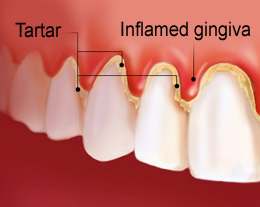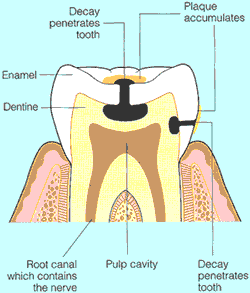A very common question we are often asked in our Solihull dental practice is what does a dental hygienist actually do at the dentist? It’s a great question, people often think that hygienists are a simple ruse to get people to spend more money, it’s actually quite the opposite!
Your dental hygienist can undertake a wide range of therapies and treatments such as:
- Carrying out a clinical examination.
- Completing a periodontal examination and charting of periodontal disease (Known as a basic periodontal examination, BPE).
- Prescribing and interpreting various forms of radiographs.
- Provide preventative oral care and liaising with the dentist over the treatment of caries, periodontal disease and tooth wear.
- Undertake cleaning above the gum margin and deep cleaning below the gum margin.
- Use antimicrobial therapies to manage plaque and other oral diseases.
- Apply topical treatments to each tooth such as fissure sealants.
- Offer advice on smoking cessation.
- Give local analgesia.
- Take impressions.
- Provide care for dental implants and the treatment of peri-implant tissues.
- Carry out an oral cancer screening.
The dental hygienist works in close corporation with the dentist and with the changes in the law can now also see new patients without having a dentist on-site or under the prescription of a dentist.
The benefits to you as a patient are that you have the best form of oral healthcare advice and treatments, often at a lower rate than you would pay at the general dentist.
What follows is our in-depth dental hygiene question and answers looking through some of the most common questions people ask at the hygienist.
How does the hygienist clean your teeth
The dental hygienist will use a range of techniques, instruments and materials to clean your teeth. Including:
- Local anaesthetics to numb any areas where deep cleaning may be required.
- Intra oral cameras too view areas at the back of your teeth, photograph and then discuss with you as required.
- X-rays to see what is happening below the gum margin and make appropriate treatment choices.
- Various instruments to scrape away tartar, called a prophylaxis.
- Ultrasonic cleaners which used high-frequency sound waves in conjunction with water to remove part in difficult to reach areas.
- Floss and interdental brushes to clean between your teeth.
- Various rotating brushes and polishes to polish and clean your teeth.
What does plaque look like on your teeth?

Plaque is a natural biofilm made up of millions of bacteria which live in your mouth, plaque is a sticky layer which adheres to the surface of your teeth and is not immediately visible. Disclosing tablets can help to stain the plaque a contrasting colour so you can see where it is on your teeth.
If plaque is not removed daily it can build up and harden into tartar, this is a creamy/yellow hard buildup which forms in between your teeth. Tarter is far more visible than plaque and is a sign that the plaque is not been removed adequately.
Can plaque fall off your teeth?
Because plaque is the sticky layer which forms of your teeth it cannot fall off. When plaque hardens it becomes tartar in between your teeth, this also is stuck to your teeth and will not fall off naturally. If left unchecked tartar will build up, irritate your gums and caused bleeding, this can result in dental decay, loss of bone and ultimately tooth loss.
How long does it take for plaque to form on your teeth?
Plaque forms on your teeth in a matter of hours which is why it’s important to clean your teeth at least twice per day, plus using a fluoride containing mouthwash in between teeth brushing. This helps to keep your teeth and as free from plaque as possible throughout the day.
How can I scrape plaque off my teeth?
The advice of any dental professional will be to not attempt to clean the plaque or tartar off of your teeth by scraping. Using a toothbrush with a fluoride containing toothpaste twice per day will help to keep the sticky plaque levels down. If you do this in conjunction with interdental brushing flossing this will prevent plaque from hardening into the tartar between your teeth.
If you attempt to remove this hard tartar by scraping at home you stand a high chance of damaging your delicate gum area.
Is scaling a painful procedure?
Scaling is not generally a painful procedure although it can be sometimes uncomfortable. Your dental hygienist will need to clean just below the gum line of your teeth, this is the part which can feel more uncomfortable. Should you require deep scaling below the surface of your teeth then a local analgesia will be given by the hygienist.
How long does it take to recover from deep cleaning?
The oral environment is a perfect environment for healing and you will find the wounds in your mouth heal very quickly. It therefore doesn’t take long to fully recover from deep scaling, you should see a noticeable improvement in 5 or 6 days after the scaling procedure.
You will usually find that you have a follow-up appointment in 6 weeks with the hygienist to check on progress.
Can a cavity heal on its own?

No, a cavity is caused when the tooth starts to rot and decay. This decaying results in a loss of tooth structure which will not be rebuilt on its own. Once decay starts and is through the hard enamel outer layer of your tooth and into the softer dentine on the inside of your tooth it can progress rapidly.
Visiting your dentist and hygienist regularly will ensure that any early warning signs of decay are spotted, this early decay can then be filled to prevent it worsening, this also saves you money as any filling will be much smaller.
Summary
Now that you know more about what the dental hygienist does we highly recommend that you visit your local hygienist at least twice per year to keep your dental health in the best condition possible.


